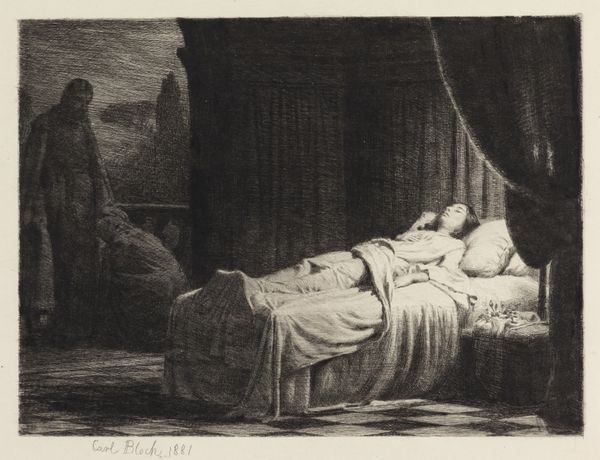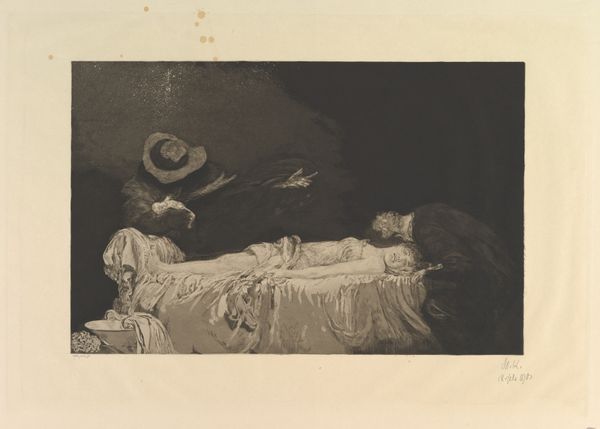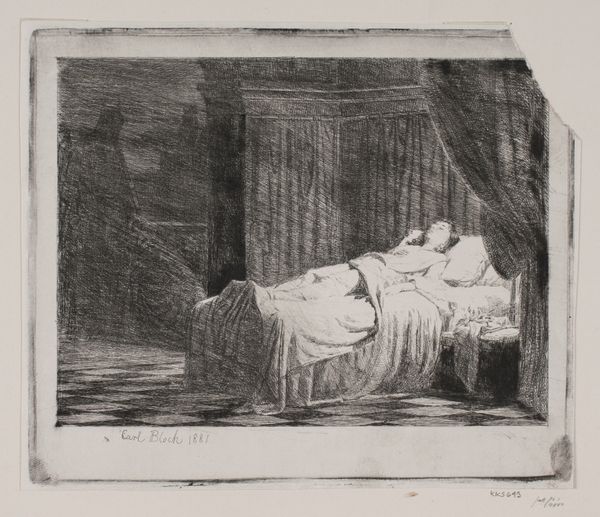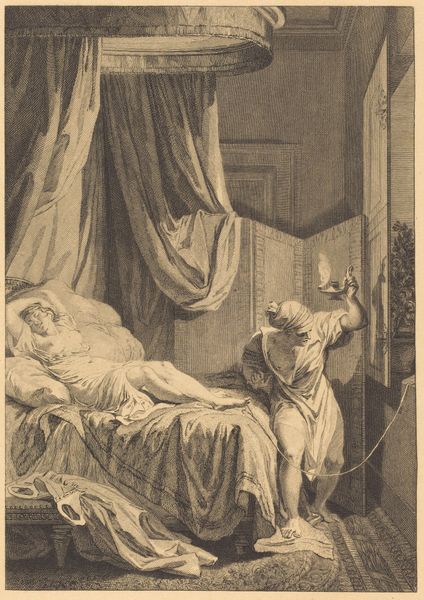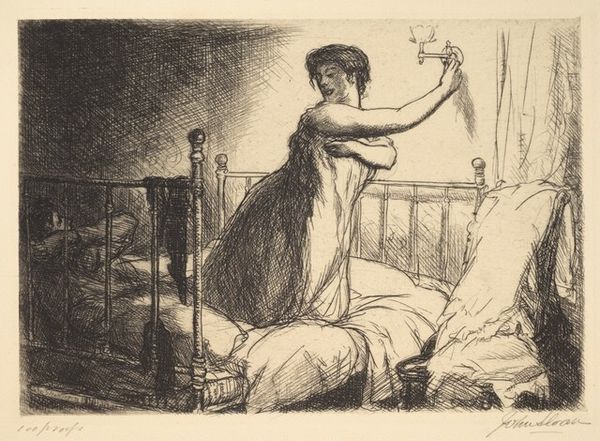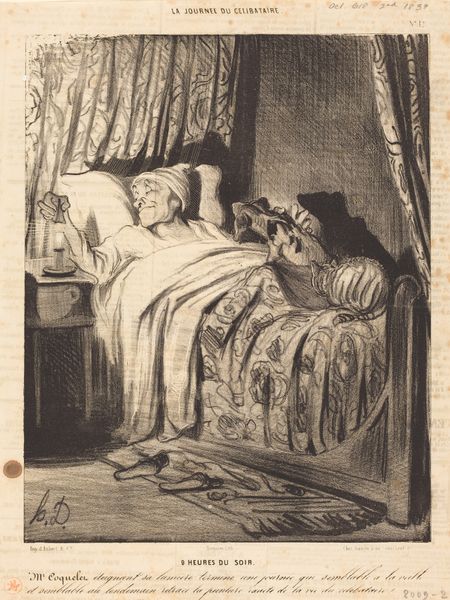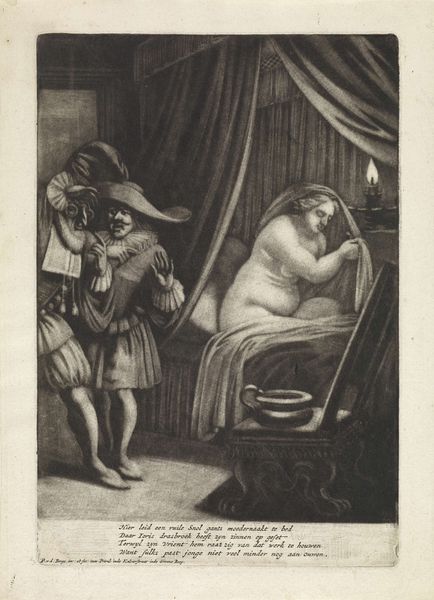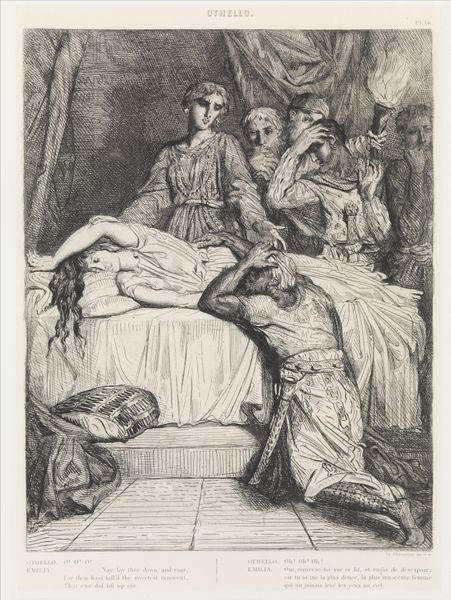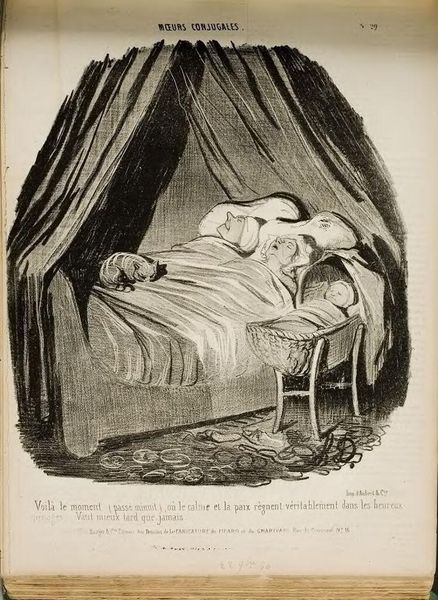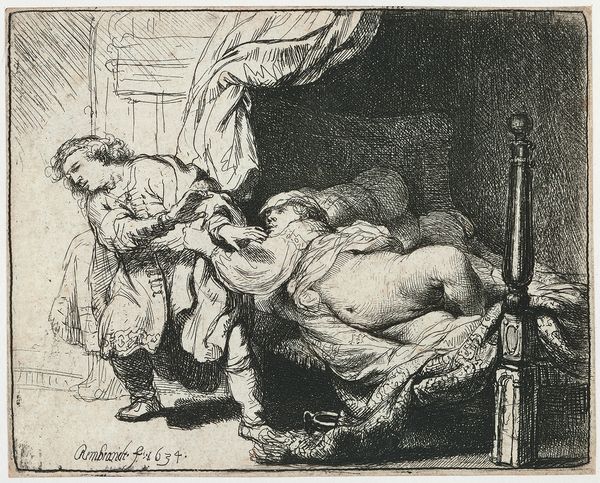
One WIll Excuse Her Because She Has Danced Too Much 1847
0:00
0:00
lithograph, print
#
portrait
#
lithograph
# print
#
figuration
#
romanticism
#
genre-painting
Dimensions: 6 7/8 x 8 1/4 in. (17.46 x 20.96 cm) (image)10 3/8 x 11 3/4 in. (26.35 x 29.85 cm) (sheet)
Copyright: Public Domain
Curator: Ah, the weariness depicted is palpable. I am moved. Editor: Indeed. This is “One Will Excuse Her Because She Has Danced Too Much” by Paul Gavarni, created in 1847. It's a lithograph, offering a glimpse into a private moment. Curator: I see more than just a genre scene. There's a complex story implied. The subject—a young woman collapsed in bed, her discarded accessories nearby—speaks to the exhausting demands placed on women in Parisian society, particularly those in entertainment. Are we not seeing her humanity, beyond the spectacle? Editor: Certainly. The visual weight is very heavy on the blacks of the curtains. But even beyond the darks is the interplay between the texture of the crumpled bedding and the smoother rendering of her face which gives it a very strong contrast. There’s a push and pull. Curator: I agree. And consider the title – "One Will Excuse Her." There's a hint of both judgment and empathy. Was her “dancing” a transgression against societal norms? And, in effect, against traditional constructs? Does her fatigue become a silent act of rebellion? This piece feels very ahead of its time! Editor: Perhaps. The formal qualities enhance this reading. See how the composition draws the eye directly to her face, then slowly spreads over her clothing in sharp detail before disappearing in the textures of her bedclothes and the background darkness. The details help you see what's significant to the artist's portrayal of her life. Curator: To consider how the Romantics grappled with genre, in this particular case, allows us insight on representations of femininity that are often not examined under such harsh but empathetic light. Gavarni really pushes us here, I think. Editor: Yes, Gavarni expertly manipulates tonal gradations to communicate her exhaustion in physical form. In a way it gives us more of an appreciation of just how grueling it can be in certain conditions of servitude. The medium itself lends itself to capturing the delicate nuances of light and shadow in this private sphere. Curator: Ultimately, Gavarni encourages us to question the social structures that lead to such exhaustion. And that should encourage us, as always, to confront contemporary parallels. Editor: It is also just beautifully composed in order to carry that theme across effectively! Something that many viewers may overlook, without thinking on those fundamental visual elements.
Comments
No comments
Be the first to comment and join the conversation on the ultimate creative platform.

